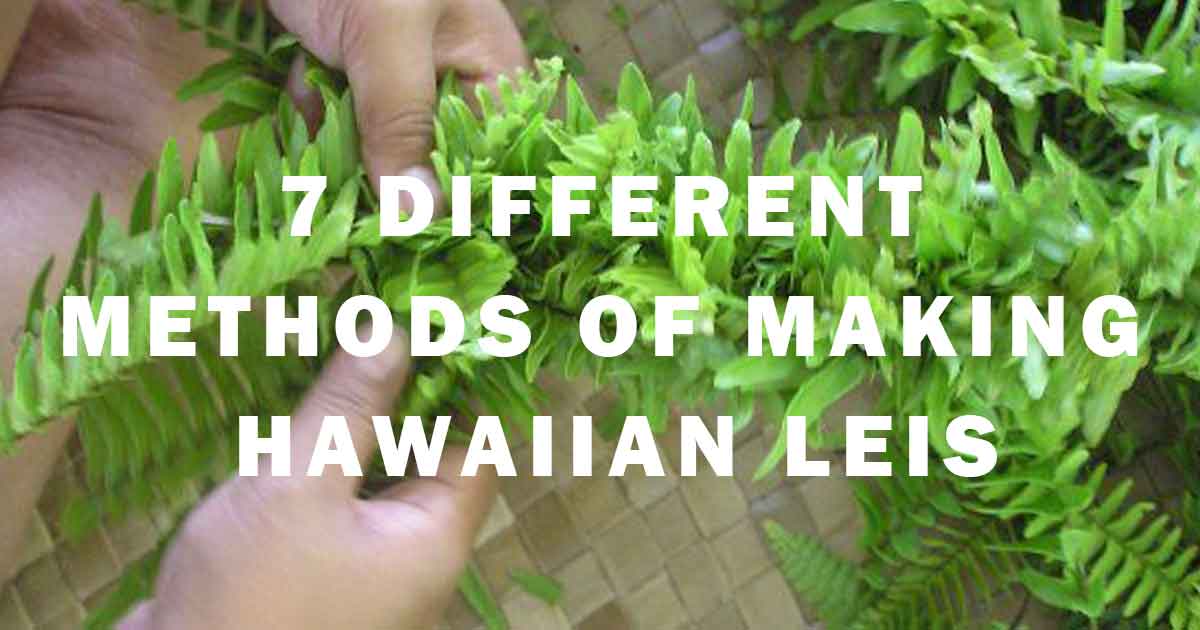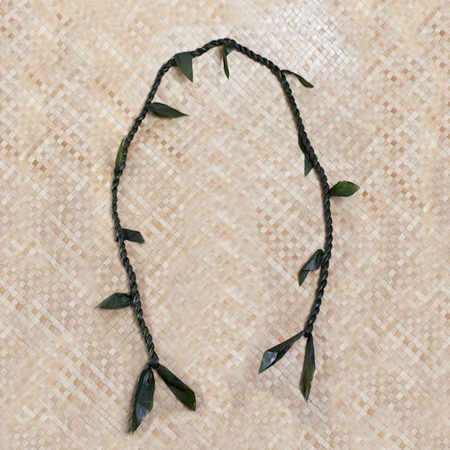Hawaiian Leis, Lei Making
7 Different Methods of Making “Hawaiian Leis”
In recent times, Hawaiian Leis have become quite popular. Hawaiian leis aren’t only sought after in Hawaii, where it is from, but all over the nation. It is also becoming recognized in countries like Japan and Canada. Hawaiian leis can be used for graduations, weddings, birthdays, parties, celebrations of life or any type of occasion. Perhaps you don’t know much about Hawaiian leis or know very little about them but we hope this article will shed some light on the matter.
You might notice there are many ways of making different varieties of leis. Hawaiian leis come in many different styles such as braided, strung, twisted, knotted. They also come in various colors and materials. There are 7 popular different lei weaving styles used.
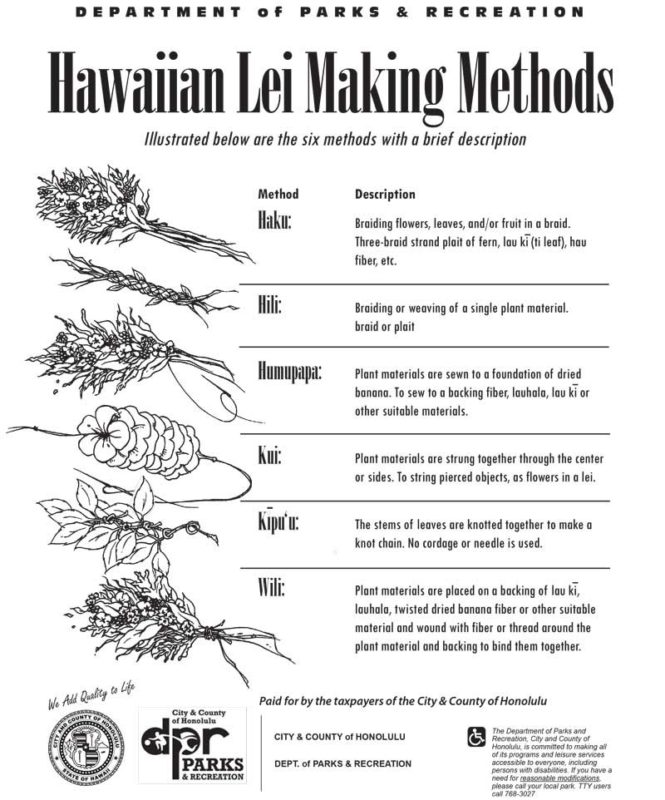
credit: https://www.honolulu.gov/
The above picture illustrates the six different methods and styles of making Hawaiian leis. I will add another popular method of making Hawaiian leis which is number seven. Here are 7 methods of making Hawaiian leis.
Haku
The Haku style of weaving incorporates three strands similar to braiding one’s hair. It is called the three-ply braid and uses different materials depending on the styles and colors one wants. It is common to see some extravagant Haku braids utilizing various materials and sizes together. Traditionally, Haku Lei used things like long leaves or softened tree bark as the base. In recent times, it is common to use vinyl materials as the base for its strength and versatility. Haku Leis are unique in that you can braid almost any type of flower to match your colors or theme. In general, longer flowers that contain flexible stems or leaves are used to braid more effectively.
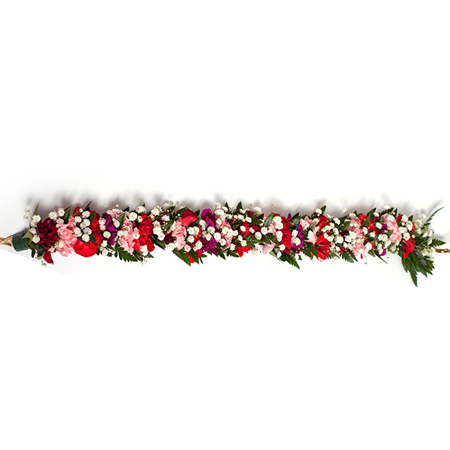
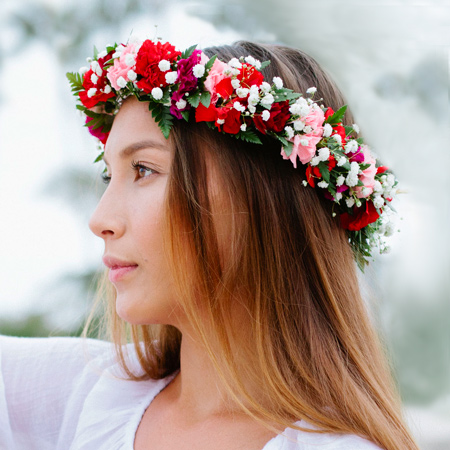
Hili
This style of braid is a solid braid just using only one material. It is common to use at least three or more strands for this braid. Flexible vines or ferns are often used and braided almost in a rope like fashion. Common types of lei hili: Palapalai & Kauna`oa
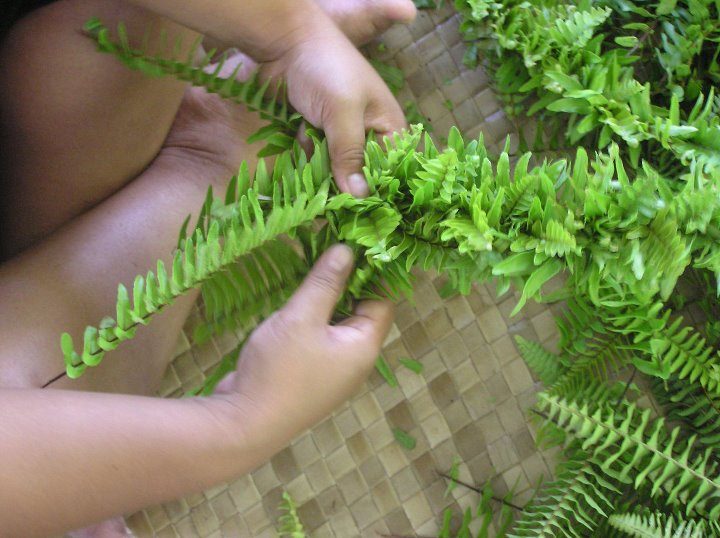
Kupukupu, fern with undivided fronds, are easily plaited into lei hili. Image, Leilehua Yuen credit:https://www.leiday.org/lei-hili/
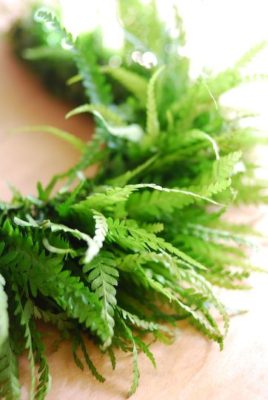
credit: wtjournal.exblog.jp
Humupapa
On this particular style of weaving, it’s one that uses a backing where the flowers and plants chosen are sewn to this backing material. Normally the backing material is made from Lauhala, paper, la’i, or even felt or similar fabrics. It is commonly compared to looking like a scale pattern as each flower or material is sewn in succession to one another. This creates a very tight and even pattern with very little gaps. This style is typically seen on feather leis adorning a woven lauhala hat.
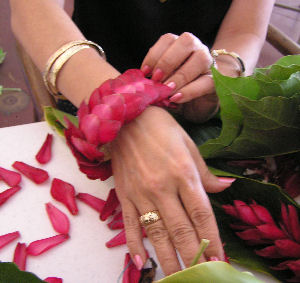
credit:leiday.org
Kui
The Kui style of weaving is the most widely used and most popular for typical Hawaiian leis. In this method, the flower or material is pierced with a needle and strung through with thread in a consecutive pattern. This style is the most common where most people around the world have most likely seen this or are familiar with it. The Kui style is normally used to sew with flowers such as orchids, plumeria, tuberose, carnation, and roses.
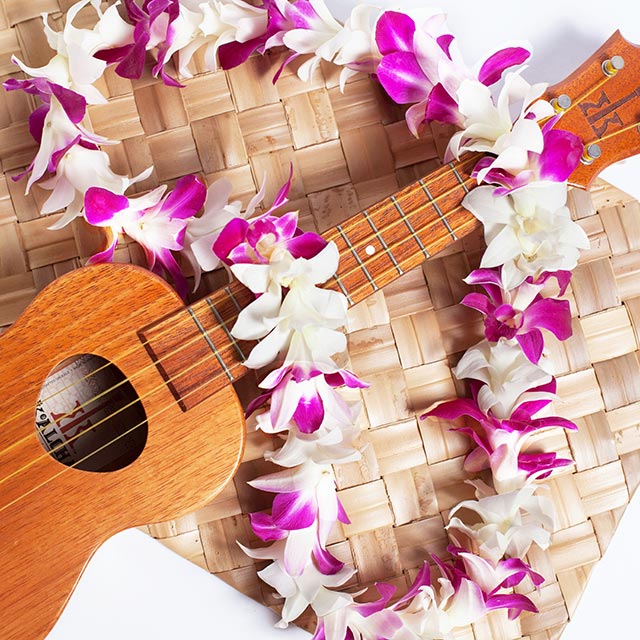
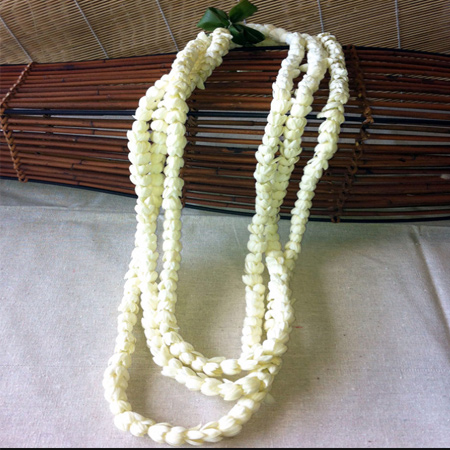
Kipu’u or Nipu’u
Two different names but this style of weaving is done by making knots with the stems of your plant material of choice and connecting them together. Normally this is done by stringing the next flower stem through your last knot and continuing on with this pattern. The plant material you choose should be one that has long stems for this type of braid.
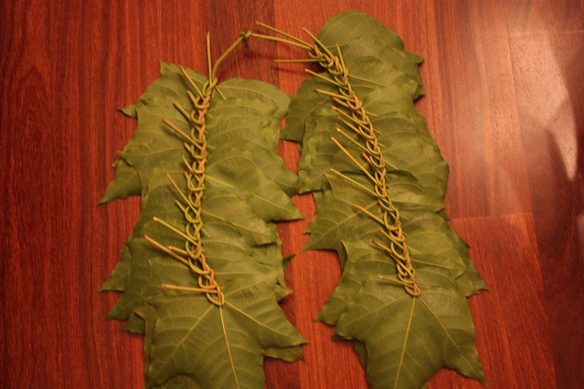
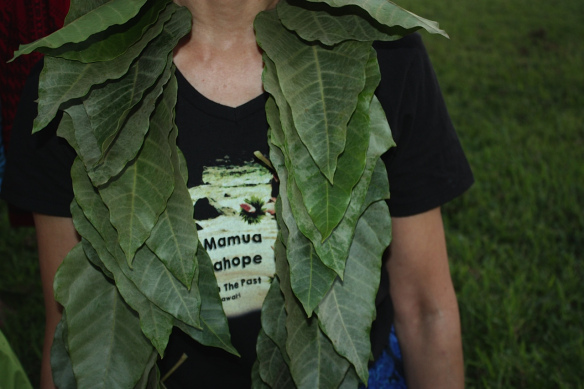
credit: halaukaleikukuihiilani.wordpress.com/
Wili
Wili style of weaving is a unique twisting like method. It is described as a corkscrew twisting or a coil and resembles the seed pod of the wiliwili tree itself. In this style you wind a fiber or cord around your chosen flowers and material in a consecutive pattern. Normally one chooses shorter lengths of their flowers and materials for this twisting style of weaving. Often times a base material is used such as lauhala, or decorative paper which makes the process much easier. Think of wrapping or coiling your cord around each flower and material to secure it making a beautiful end design. The most frequently seen lei of this type is the Lei Maile.
Another commonly seen lei of this style is the lei wili papa, in which the decorative material is lashed to a center cord with a wrapping technique. This is often used for lei pāpale or lei poʻo. It’s so one side has no decorative foliage and is left flat to rest against the hat or head
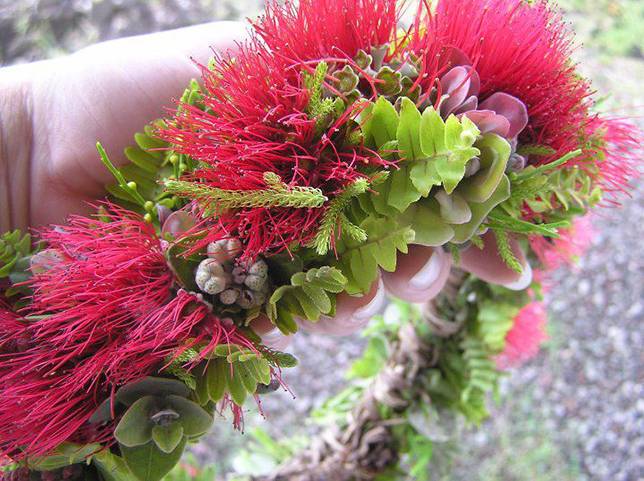
credit: leiday.org Lei wili papa of lehua, wāwaeʻiole, and kupukupu. The base and cordage are dry lāʻī.
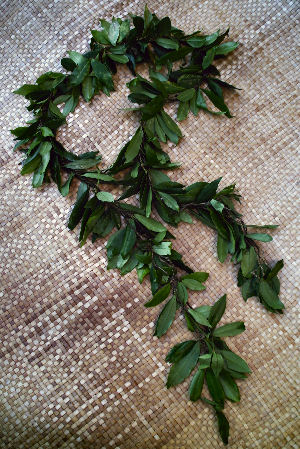
credit: Ka’ahele Hawaii
Hilo
The Lei Hilo is essentially a rope. Legend has it that the town of Hilo takes its name from this rope of two-ply twisted lāʻī, tī leaf. This method is a basic twist and intertwine. The Hilo lei is made by twisting two strands together to form a rope. Simple lei lā`ī is made using this method. Common types of lei hilo are Lā`ī and kauna`oa.
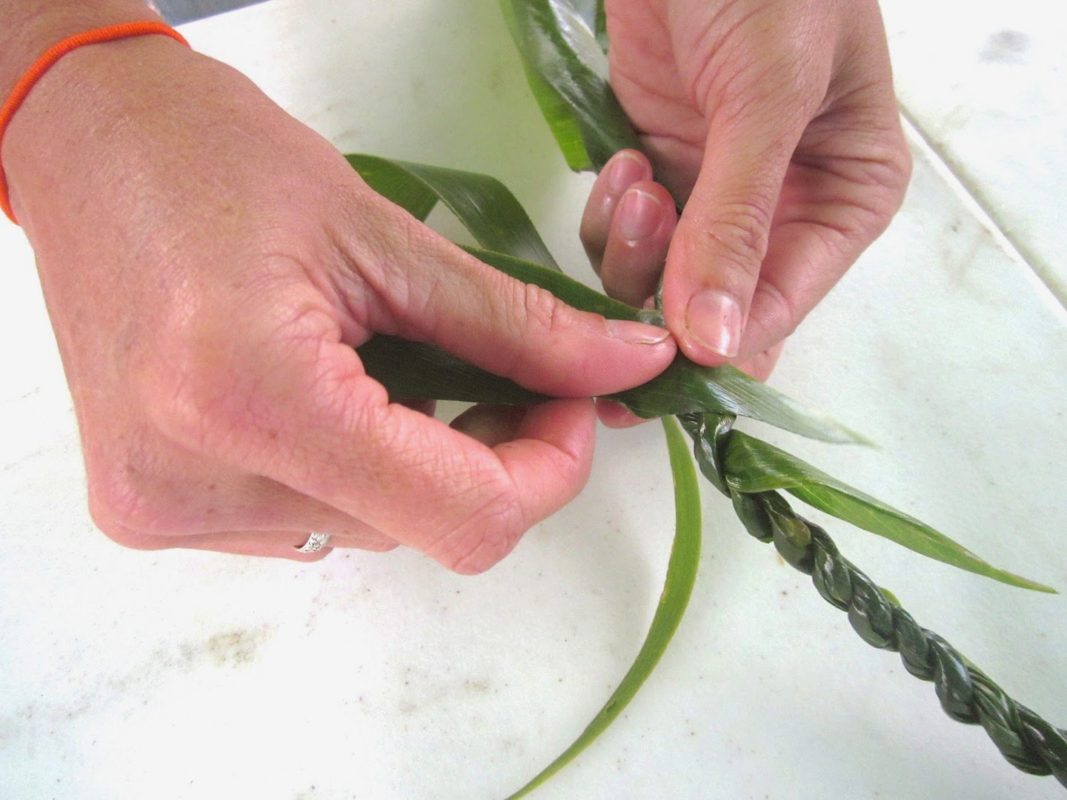
credit: http://custardandclues.blogspot.com/
Conclusion
We have looked at the seven styles of making Hawaiian leis. It is fair to say that overall the Kui style of weaving or otherwise known as the Single Strand Lei is the most popular style. We have concluded that a big reason for its popularity is that it is simple and allows many different people with different skill levels to enjoy this craft. However, each style comes with its own unique look and beauty. There is no one style that is superior over another, especially when there are so many different occasions for different styles of leis to match. Whatever style you choose, it’ll look amazing when gifted or worn by loved ones.





